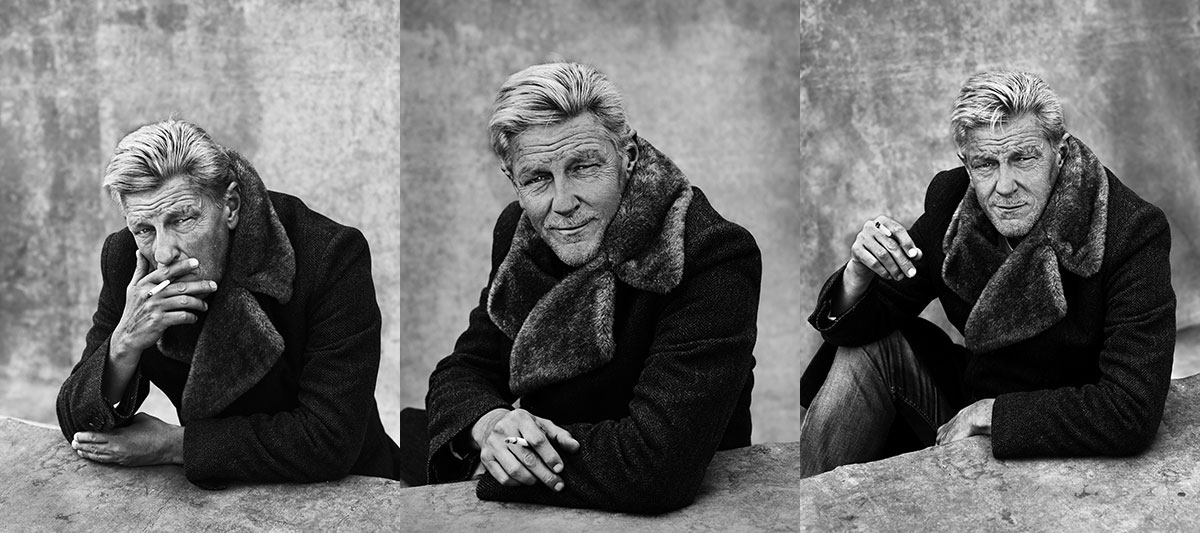
Jan Fabre (b. 1958, Antwerp) is regarded both in Belgium and abroad as one of the most innovative and versatile personalities in the contemporary international art scene. Over the past 40 years, he has made his mark as a visual artist, theatre artist and author. He describes himself as a consilience artist, someone who is constantly searching for bridges between different disciplines. Thanks to this undertaking, he gives fresh interpretations to the world of visual art, theatre and literature.
Jan Fabre changed the idiom of theatre by bringing real action and real time onto the stage. Following his historic eight-hour production ‘This is theatre like it was to be expected and foreseen’ (1982) and the four-hour ‘The Power of Theatrical Madness’ (1984), he explored new territory with ‘Mount Olympus. To glorify the cult of tragedy, a 24-hour performance’ (2015); a monumental marathon piece with which he rewrote international theatre history.
In his visual oeuvre, Jan Fabre has developed a unique and coherent world; a highly personal visual language with recurring symbols and motifs. Whilst studying in Antwerp at the Royal Academy of Fine Arts and the Municipal Institute for Decorative Arts and Crafts, he developed a profound love of beauty and its spiritual power. Curious by nature and influenced by the manuscripts of the entomologist Jean-Henri Fabre (1823-1915), Jan Fabre became fascinated by the world of insects at a young age.
The interaction between human and animal, and between animal and human, is an important component of metamorphosis, and is thus a constant in Fabre’s body of thought. Research into the meaning of the body is essential in the oeuvre of Jan Fabre: the body is the entrance to every emotion, thought and higher contemplation. Fabre uses interventions on his own body to explore its fluid boundaries. This is an endless quest for the self, the shell which serves as the entrance to deeper contents. The artist’s enduring fascination with the body is also strongly apparent in the personal actions and performances, from 1976 to today.
Jan Fabre has been invited to integrate artworks into various public locations in Belgium and abroad, including: ‘The Man Who Measures the Clouds’ (1998), which can be seen at various sites in Europa and Asia. In Brussels, you experience ‘The Gaze Within (The Hour Blue)’ (2011-2013) in the stairwell of the Royal Museum of Fine Arts and ‘Heaven of Delight’ (2002) at the Royal Palace. You can find ‘Totem’ (2004), an installation depicting a jewel beetle on the Ladeuzeplein in Leuven which became a symbol of the city. In Antwerp, the artist’s hometown, you encounter ‘The Man who Bears the Cross’ (2015) in the Cathedral of Our Lady. In the same city Fabre created three altarpieces in the footsteps of Rubens, Jordaens and Van Dyck in St. Augustine’s Church/AMUZ. Like ‘Heaven of Delight’, these altarpieces are made with the wing cases of jewel beetles. His latest addition to his public installations are four red coral sculptures in the chapel of Pio Monte della Misericordia in Naples (2019), in dialogue with a masterpiece of Caravaggio.
As well as being a visual artist and a theatre artist, Jan Fabre is also the author of a large oeuvre of theatre texts that are regarded as reference works by theatre directors, academics and performers alike. Over the years, Jan Fabre has created his own language of ‘physiological’ acting, summed up in his guidelines for a performer in the 21st century. Jan Fabre Teaching Group also passes on his theatre texts and specific language as an instrument to new generations of artists all over the world. The imagination and physical awareness are gradually sharpened and the performer is challenged to build a bridge to a state of physical transformation.


